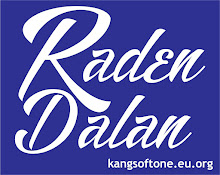Introduction
In the evolving landscape of education, finding the right balance between screen time and traditional learning methods has become a critical consideration. As technology continues to play an integral role in the educational sphere, educators and parents grapple with the challenge of integrating digital tools while preserving the essence of traditional learning. This article explores the benefits and challenges of both approaches and suggests strategies for achieving a harmonious blend that maximizes the advantages of each.
The Benefits and Challenges of Balancing Screen Time and Traditional Learning Methode
1. The Rise of Digital Learning
The integration of digital tools in education has ushered in a new era of dynamic and interactive learning experiences. Educational apps, online resources, and multimedia content provide students with engaging opportunities to explore concepts, collaborate with peers, and develop digital literacy skills.
2. Preserving the Essence of Traditional Learning
Traditional learning methods, including face-to-face instruction, textbooks, and hands-on activities, offer a time-tested foundation for education. These methods foster essential skills such as critical thinking, problem-solving, and interpersonal communication, contributing to a well-rounded educational experience.
3. Individualized Learning Paths
One of the advantages of digital learning is its capacity to cater to individual learning styles. Adaptive software and online platforms can personalize learning paths, allowing students to progress at their own pace and receive targeted support in areas where they may need additional assistance.
4. Screen Time Concerns
Despite the benefits of digital learning, concerns about excessive screen time and its potential impact on students’ well-being persist. Striking a balance becomes crucial to address these concerns and ensure that students have a holistic educational experience that includes physical activities and face-to-face interactions.
5. Incorporating Blended Learning Models
Blended learning, combining both digital and traditional methods, has gained popularity as an effective approach. This model allows educators to leverage the benefits of technology while maintaining the value of in-person interactions and hands-on activities. It provides a flexible and adaptive learning environment.
6. Fostering Digital Literacy Skills
In a digitally driven world, cultivating digital literacy skills is essential for students’ future success. Integrating technology in education not only enhances subject knowledge but also equips students with the digital competencies necessary for the modern workforce.
7. Ensuring Equity in Access
Balancing screen time also involves addressing disparities in access to technology. Educators and policymakers must work to ensure that all students, regardless of socioeconomic background, have equitable access to the tools and resources needed for both digital and traditional learning.
8. Parental Involvement and Guidelines
Collaboration between educators and parents is crucial in managing screen time. Establishing clear guidelines for screen use at home, encouraging a healthy balance between online and offline activities, and fostering open communication can help create a supportive learning environment.
Conclusion
Balancing screen time and traditional learning methods requires a thoughtful and adaptable approach. By harnessing the strengths of both digital and traditional education, educators and parents can create an environment where students thrive academically, develop essential skills, and navigate the digital landscape responsibly. As education continues to evolve, finding this harmony ensures that students are well-prepared for the multifaceted challenges of the 21st century.
 KangSoftone Berita Informasi Terlengkap & Terbaru
KangSoftone Berita Informasi Terlengkap & Terbaru